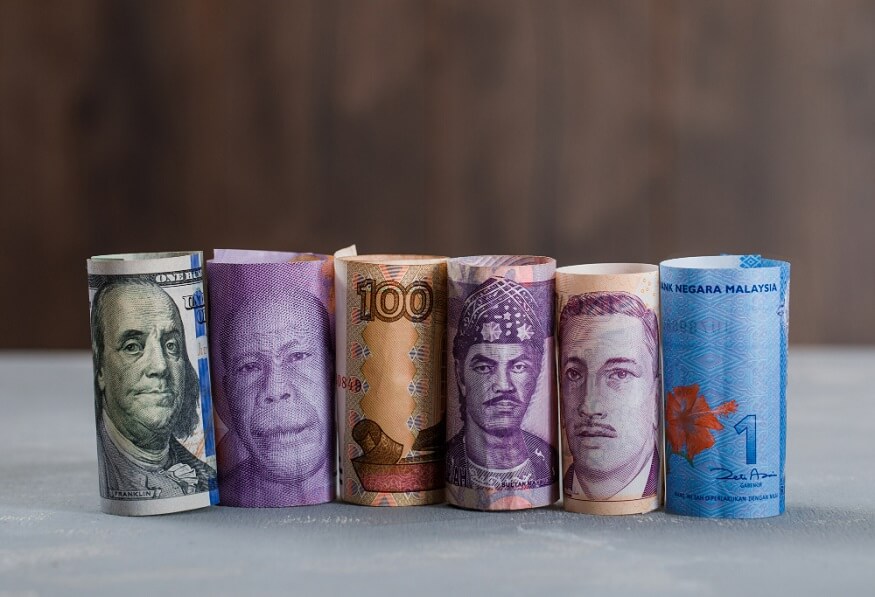Understanding the concept of currency is crucial for children as they grow, helping them navigate the financial landscape. In this article, we will explore what currency is, delve into the fascinating history of money, and provide a list of different currencies with their symbols, making the learning process engaging for kids.
What is Currency?
Currency is a system of money that is used in a particular country or region. It can take various forms, such as coins and banknotes, and it is generally issued and regulated by the government or central authority. The primary purpose of currency is to facilitate the exchange of goods and services. Through the use of currency, individuals can assign value to products and easily trade them.
Also Read: The Comptroller and Auditor General’s Role in Ensuring Financial Accountability
History of Currency
The history of currency dates back thousands of years, with different civilisations adopting various forms of money to facilitate trade. In ancient times, barter systems were prevalent, where goods and services were exchanged directly. However, as societies grew more complex, the limitations of bartering became apparent, leading to the emergence of currency.
One of the earliest forms of currency was commodity money, where items with intrinsic value, such as shells, salt, or precious metals like gold and silver, were used for trade. This transition marked a significant step towards a more efficient and standardised economic system.
Over time, governments began issuing their currencies, backed by the state’s authority and resources. The introduction of paper money further revolutionised the concept of currency, making transactions more convenient and scalable. Today, we have a diverse range of currencies, each with its history and significance.
Also Read: Influential RBI Governors and Their Legacies
Teaching Kids about Currencies
Introducing children to the world of currencies can be an exciting and educational experience. One effective way to make the learning process engaging is by exploring the symbols associated with different currencies. Symbols represent a country’s currency, making it easier for individuals to identify and distinguish them.
List of Different Currencies with Their Symbols
These symbols are widely recognised and used in financial transactions around the world. Take a look!
- Pound Sterling (£) – United Kingdom: The pound sterling, commonly known as the pound, is the official currency of the United Kingdom. Its symbol is a stylised “L,” representing the Latin word “libra,” which means a unit of weight.
- Euro (€) – Eurozone Countries: The euro is the official currency of the Eurozone, which comprises 19 of the 27 European Union member states. Its symbol is a combination of the Greek letter “epsilon” and the letter “E,” representing the first letter of the word “Europe.”
- Dollar ($) – United States: The United States dollar is one of the most widely used currencies globally. Its symbol combines the letters “U” and “S” superimposed, denoting the United States.
- Yen (¥) – Japan: The Japanese yen is the official currency of Japan. Its symbol is a representation of a stylised “Y” with two horizontal lines, signifying the Japanese character for yen.
- Renminbi (¥) – China: The renminbi is the official currency of the People’s Republic of China. Its symbol is the same as the Japanese yen, denoting the Chinese character for yuan.
- Rupee (₨) – India: The Indian rupee is the official currency of India. Its symbol is a blend of the Devanagari script for the letter “Ra” and the Latin letter “R,” representing the rupee.
- Ruble (₽) – Russia: The Russian ruble is the official currency of Russia. Its symbol is a Cyrillic “P” with a horizontal stroke, representing the Russian word “ruble.”
- Canadian Dollar (CA$) – Canada: The Canadian dollar is the official currency of Canada. Its symbol is a stylised “C” with a vertical line, signifying the Canadian dollar.
- Swiss Franc (CHF) – Switzerland: The Swiss franc is the official currency of Switzerland. Its symbol is an “F” with two horizontal lines, representing the Latin word “francus,” meaning “free.”
- Australian Dollar (A$) – Australia: The Australian dollar is the official currency of Australia. Its symbol is a stylised “A,” denoting the Australian dollar.
Also Read: The Importance of Financial Literacy in Students
Teaching Strategies
Here are some effective teaching strategies to make the learning process enjoyable and memorable:
1. Interactive Games
Create online quizzes or board games where children can match currency symbols with their respective countries. This interactive approach makes learning fun and encourages friendly competition.
2. Storytelling
Narrate stories that incorporate the history and cultural significance of different currencies. Include interesting facts and anecdotes to capture the children’s imagination and help them relate to the subject on a personal level.
3. Arts and Crafts
Integrate arts and crafts into the lesson by allowing kids to create their own currency symbols or design imaginary banknotes. This hands-on activity not only fosters creativity but also reinforces the recognition of currency symbols.
4. Global Currency Map
Develop a visual aid, such as a world map, where currency symbols are assigned to their respective countries. Encourage children to actively engage with the map, identifying currencies and learning about different parts of the world.
5. Role-Playing Activities
Organise role-playing activities where children take on the roles of buyers and sellers in a simulated marketplace. This practical experience helps them understand the real-life applications of currencies and reinforces the connection between symbols and monetary transactions.
6. Currency Scavenger Hunt
Create a scavenger hunt where children search for images or symbols of various currencies. This activity promotes observational skills and reinforces the recognition of currency symbols in different contexts.
7. Multimedia Presentations
Use multimedia presentations, including videos and interactive slideshows, to showcase the diversity of currencies and their symbols. Visual aids can enhance understanding and cater to different learning styles.
8. Story-based Learning
Develop educational stories or scenarios involving fictional characters who explore different countries and their currencies. This narrative-based approach allows children to learn about currencies in a relatable and enjoyable manner.
9. Currency Trading Simulation
Introduce a simplified currency trading simulation where children can “exchange” currencies with each other. This activity helps them grasp the concept of currency exchange rates and the value associated with different symbols.
10.Field Trips or Virtual Tours
If feasible, organise field trips to local banks or financial institutions where children can see real currency notes and coins. Alternatively, virtual tours can provide a similar experience, allowing them to explore currency production and history online.
Also Read: Financial Literacy Education
EuroSchool not only fosters an understanding of the world around them but also instils responsible financial habits from an early age, setting the stage for a financially literate future.











